Uluwatu Temple, or Pura Luhur Uluwatu, stands majestically on a steep cliff on Bali’s southwestern coast. Facing the Indian Ocean, the temple offers panoramic views, spiritual serenity, and ancient charm. It is one of Bali’s oldest and most revered sea temples.
This sacred site plays a vital role in Balinese Hindu beliefs. Beyond its stunning location, Uluwatu Temple holds powerful spiritual meaning and rich historical value. Tourists and pilgrims alike come to experience the sacredness of this clifftop sanctuary.
Read here: Padma Bhuwana: The Sacred Compass of Balinese Space and Life
The History of Uluwatu Temple
Early Origins
The roots of Uluwatu Temple stretch back to the 11th century. It was first established by Empu Kuturan, a respected Javanese sage. He came to Bali to spread Hindu teachings and spiritual order. During his stay, he founded several key temples, including Uluwatu.
At that time, Uluwatu was already a spiritually significant spot. The cliff’s super height and ocean backdrop made it ideal for worship and reflection. So, it was natural for Empu Kuturan to designate this place as sacred.
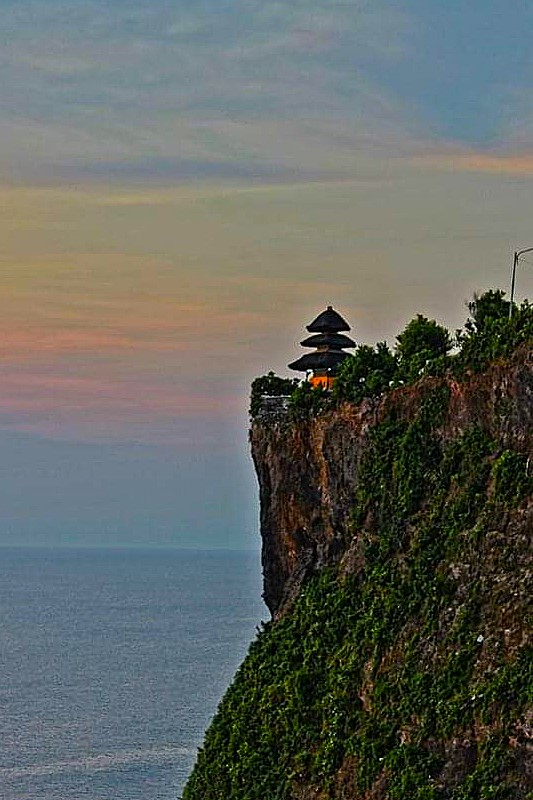
The Role of Dang Hyang Nirartha
Later, in the 16th century, another sage named Dang Hyang Nirartha visited the site. He was a revered holy man from East Java. He traveled across Bali, building temples and spreading the teachings of Shivaism.
According to legend, Nirartha ended his earthly journey at Uluwatu. It is said he achieved moksha (spiritual liberation) here. His soul merged with the divine realm. This belief turned Uluwatu into a deeply sacred site. Today, the temple is partially dedicated to his spirit.
Spiritual Significance in Balinese Cosmology
Uluwatu Temple is one of Bali’s Sad Kahyangan, or six main temples of the world. These temples protect the island from spiritual threats in all directions. Uluwatu guards the southwest and is associated with Lord Rudra, a fierce form of Shiva.
Additionally, the temple belongs to the Pura Segara group, which includes temples that face the sea. These temples honor the sea gods, especially Baruna, the god of the ocean.
Rediscovery and Continued Worship
While Uluwatu has always been revered by locals, it gained more attention during the Dutch colonial era. Scholars and travelers began documenting it in the 19th century. Later, restoration efforts took place in the 20th century to preserve the structure from erosion and lightning damage.
Despite these changes, the temple remains a place of active worship. Locals continue to pray and hold rituals here, especially during temple anniversaries.
The Layout of Uluwatu Temple
Uluwatu Temple is located on a limestone cliff that towers over 70 meters above sea level. The structure blends naturally with its rocky surroundings. Because of this, visitors often describe the experience as both breathtaking and humbling.
The temple faces west and is perfectly positioned to witness dramatic sunsets. Waves crash against the rocks below, and seabirds glide through the sky. These natural elements enhance the sacred feeling of the temple grounds
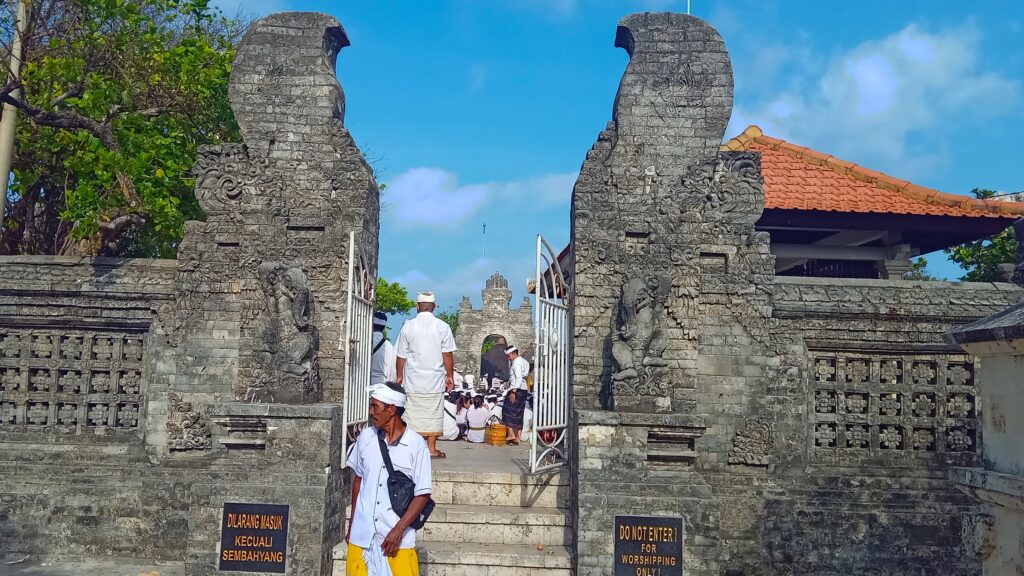
Like most Balinese temples, Uluwatu follows the traditional tri-mandala layout, which includes:
- Outer Zone (Jaba Pisan)
- Middle Zone (Jaba Tengah)
- Inner Zone (Utama Mandala or Jeroan)
Each zone has a different level of sanctity. Let’s take a closer look at each area.
1. Jaba Pisan – The Outer Courtyard
This is the first area that visitors enter. It includes:
- A stone pathway lined with greenery
- A Candi Bentar (split gate), which symbolizes transition
- Stone carvings and statues that act as protectors
In this zone, visitors prepare themselves before entering deeper parts of the temple. It’s also a space for gathering before festivals and processions.
2. Jaba Tengah – The Middle Courtyard
The middle courtyard contains important structures such as:
- A Bale Gong (pavilion for gamelan music)
- A Bale Pesandekan (resting pavilion for priests)
- Small altars and offering platforms
This area serves as a transitional space. Only those with proper attire—sarong and sash—may proceed further. During major ceremonies, dancers and musicians perform here.
3. Utama Mandala – The Inner Sanctum
The inner courtyard is the holiest part of the temple. It is restricted to priests and authorized worshippers. Here, you will find:
- Pelinggih shrines made from black stone
- A Meru tower with tiered roofs
- The main shrine dedicated to Lord Rudra
This sacred space is filled with spiritual energy. Even though tourists cannot enter, they can still view the area from a respectful distance.
The Shrines of Uluwatu Temple
Main Shrine of Lord Rudra
At the heart of the inner sanctum stands a Meru shrine dedicated to Rudra, a fierce form of Lord Shiva. This multi-roofed tower symbolizes the connection between the earthly realm and the divine.
Locals pray here for protection, health, and blessings. Offerings of flowers, fruit, and incense are made regularly.
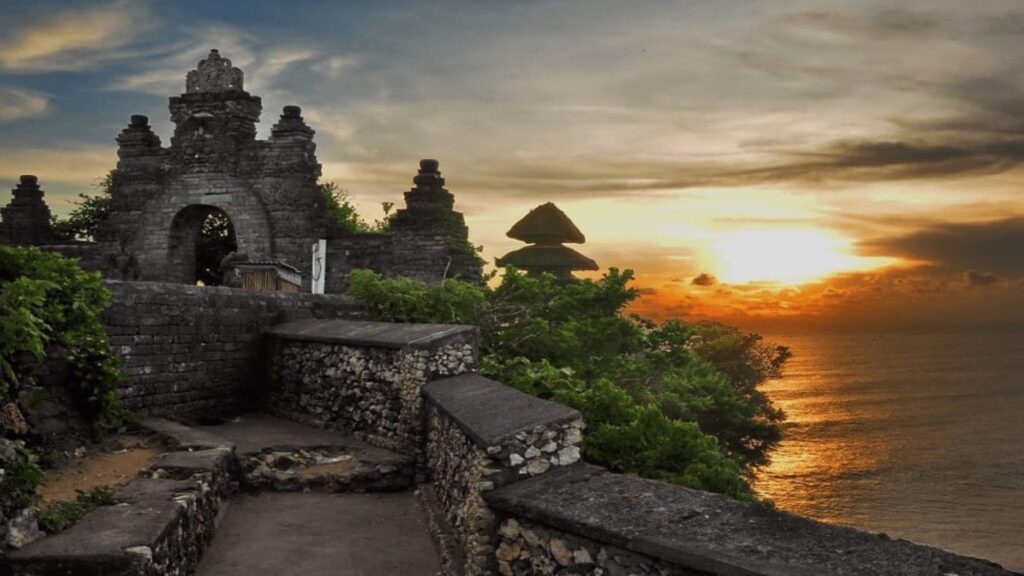
Shrine to Dang Hyang Nirartha
Near the main shrine, there is another important structure. It is dedicated to Dang Hyang Nirartha, the sage who achieved moksha at Uluwatu. This shrine honors his spirit and celebrates his teachings.
On specific days, priests perform rituals to connect with his divine presence. His shrine is considered powerful, and many Balinese seek his spiritual guidance.
Small Pelinggih for Sea Deities
Throughout the temple grounds, you’ll see smaller pelinggih shrines. These are dedicated to:
- Baruna, the god of the ocean
- Dewi Danu, goddess of water
- Guardian spirits of the sea and forest
These shrines maintain harmony between the temple and its surrounding nature. Together, they reflect the Tri Hita Karana philosophy—the balance between humans, nature, and the divine.
Additional Features of the Temple Complex
Sacred Forest and Monkeys
Uluwatu is surrounded by a small forest filled with long-tailed macaques. Balinese people believe these monkeys are guardians of the temple. They protect it from dark forces.
However, visitors should be cautious. These monkeys are clever and sometimes snatch sunglasses or cameras. Guides often suggest hiding loose items before walking through the forest.
Cliffside Path and Viewing Points
A paved path runs along the cliff, offering dramatic views of the sea. Several viewing platforms give visitors a chance to admire the sunset and take photographs. Along this route, you’ll also find small shrines and sculptures hidden in the rocks.
Ceremonies and Cultural Performances
Piodalan (Temple Festival)
Uluwatu celebrates its temple anniversary, or Piodalan, every 210 days. This event draws hundreds of Balinese Hindus dressed in ceremonial attire. Colorful penjor poles, umbrellas, and flower offerings decorate the entire temple.
The air is filled with gamelan music, chanting, and the scent of incense. Devotees come to pray, dance, and give thanks to the gods.
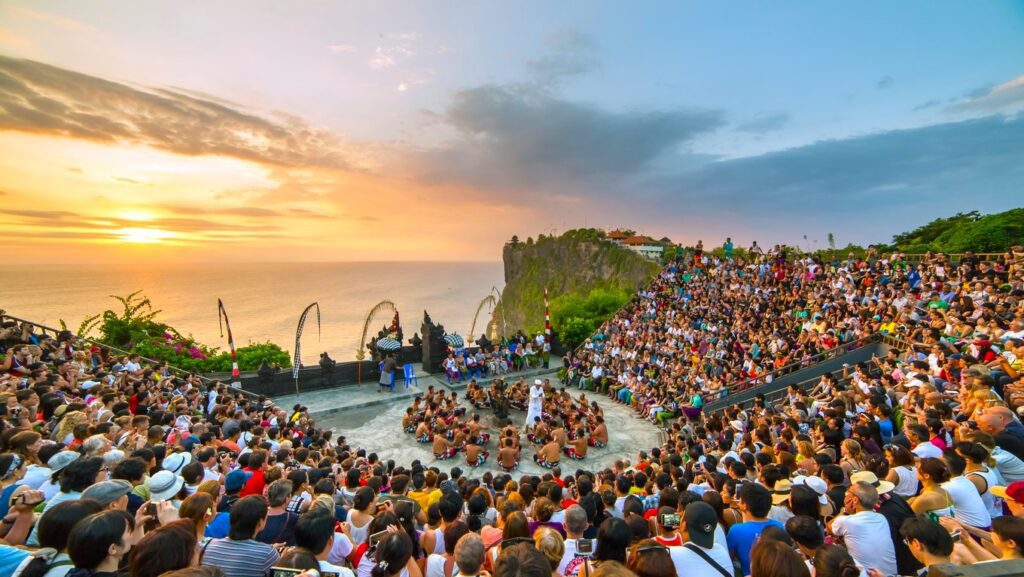
Kecak and Fire Dance
Each evening, just before sunset, the temple hosts a Kecak and Fire Dance performance. It takes place in a cliffside amphitheater near the temple. This dance retells the Ramayana epic, where Rama rescues his wife Sita from the demon king Ravana.
The performance features:
- Dozens of male dancers chanting “cak-cak-cak” in rhythm
- Dramatic costumes and fire effects
- The ocean and sunset as a stunning natural backdrop
This cultural show is both spiritual and entertaining. Many visitors say it is the highlight of their trip to Uluwatu.
Practical Information for Visitors
What to Wear
All visitors must wear a sarong and sash. These are provided at the entrance. They show respect for the sacred space.
Best Time to Visit
The best time to visit is during the late afternoon, ideally around 4 PM. You can explore the temple, enjoy the sunset, and then watch the Kecak dance.
Entrance Fee
The entrance ticket includes the sarong rental. Prices are affordable, and proceeds help maintain the temple.
Things to Avoid
- Don’t feed the monkeys
- Don’t climb on temple walls
- Don’t speak loudly during ceremonies
- Don’t enter the inner sanctum unless invited
Nearby Attractions
After visiting Uluwatu Temple, consider exploring nearby destinations:
- Padang Padang Beach – Great for surfing
- Suluban Cave – Hidden beach under the cliffs
- Garuda Wisnu Kencana (GWK) Park—Home to a giant Vishnu statue
- Melasti Beach – Offers clean sands and calm waters
- Jimbaran Bay—Famous for seafood dinners by the shore
Uluwatu Temple is a masterpiece of spiritual architecture, religious devotion, and natural beauty. With its deep historical roots, cliffside layout, sacred shrines, and ongoing rituals, the temple continues to play a vital role in Balinese life.
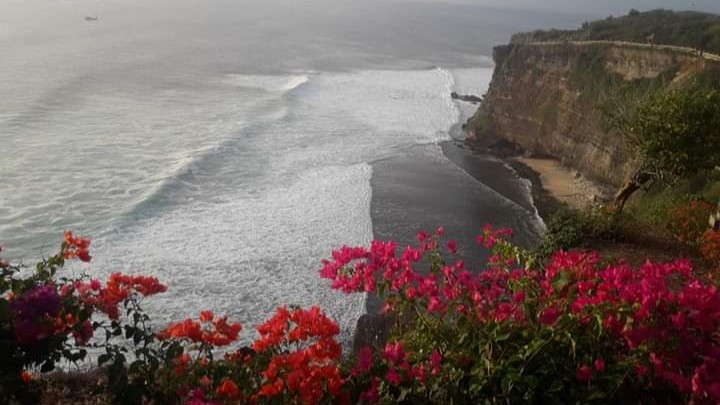
As you walk along its stone paths, watch the waves crash below, and listen to the echo of chants, you will feel the temple’s power. Whether you come for worship, sightseeing, or cultural performances, Uluwatu Temple offers an unforgettable journey into Bali’s soul.
Read here: Subak Irrigation System: A Sacred Harmony of Water, Rice, and Culture in Bali
The Best Trip Destination
Bali, Indonesia, beckons with its diverse allure. Explore Ubud’s cultural treasures, witness the iconic Tanah Lot Temple at sunset, and surf the waves of Kuta Beach. Discover the scenic beauty of Tegallalang Rice Terraces and embrace the lively atmosphere of Seminyak. Dive into the underwater wonders of Amed, relax on the pristine shores of Nusa Dua, and wander through ancient temples in the heart of Bali. Whether seeking vibrant nightlife, serene landscapes, or cultural richness, Bali’s enchanting destinations cater to every traveler’s desire.
Ubud (14 Trips)
Eastern Bali (7 Trips)
Southern Bali (5 Trips)
Northern Bali (5 Trips)
Nusa Penida Island (4 Trips)
Western Bali (4 Trips)
The Best Activities In Bali
Indulge in Bali’s diverse activities, from surfing the waves in Kuta to exploring cultural treasures in Ubud. Snorkel vibrant coral reefs in Amed, trek lush rice terraces, and rejuvenate in serene spa retreats. Dive into the lively nightlife of Seminyak, witness traditional dance performances, and sample local delicacies in bustling markets. Whether it’s hiking Mount Batur for a sunrise vista or embracing the spiritual ambiance of ancient temples, Bali offers a kaleidoscope of experiences for every traveler’s passion.

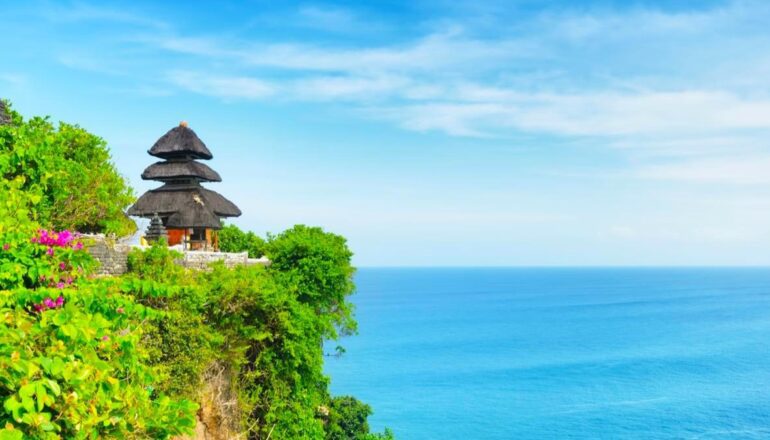



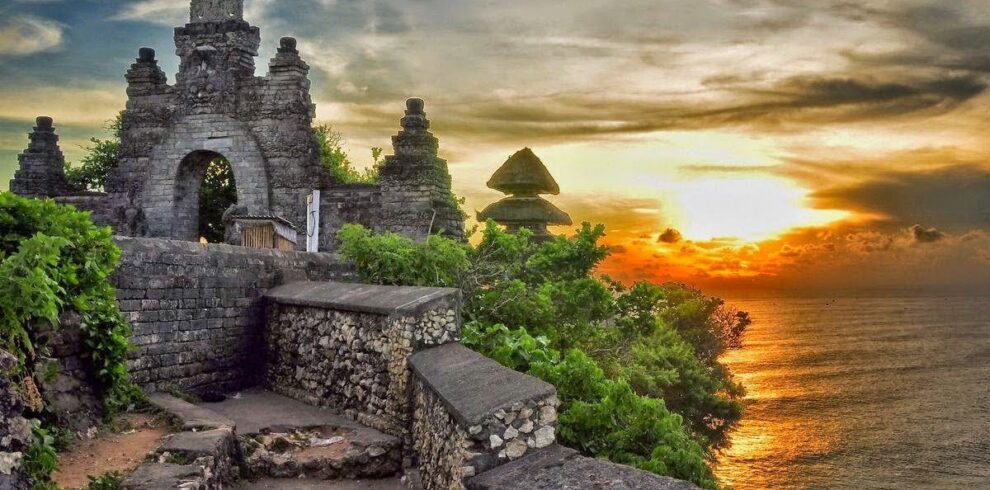




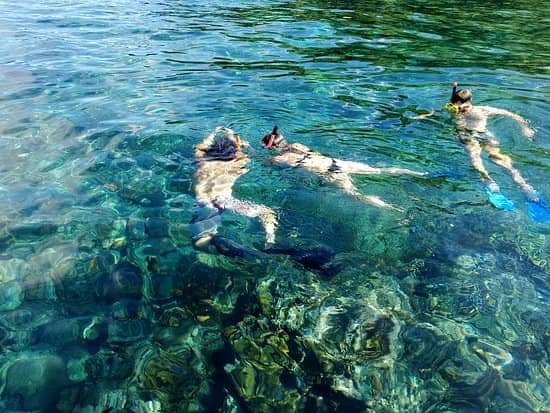





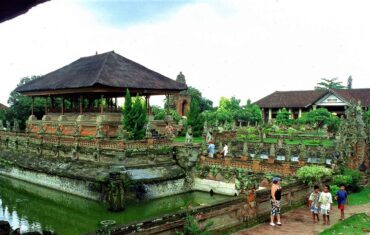
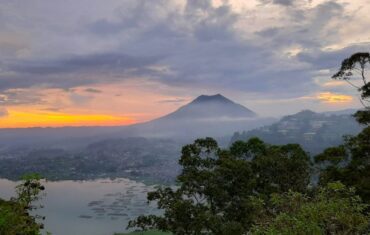
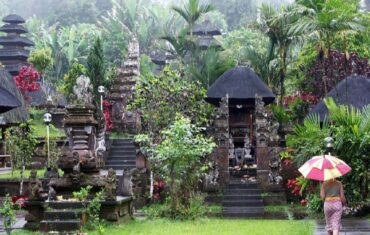
[…] Read here: Uluwatu Temple: A Sacred Cliffside Legacy in Bali […]